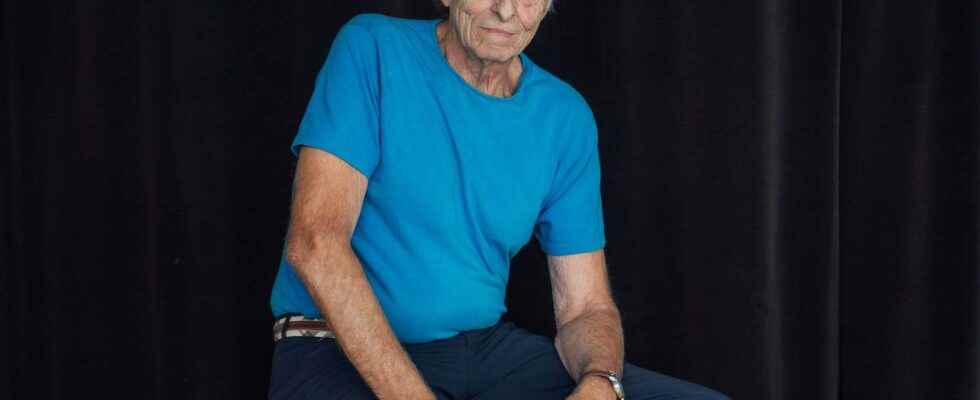Robert Lalonde could not place exactly the day he fell in love with Virginia Woolf. First dazzled by his novels, he has been interested for several years in his diary, which he always takes with him to find wisdom or inspiration.
“Virginia Woolf has always seemed to me an emblematic figure of the writer in general; someone who is obsessed with their work and feels like they have a constant date with failure. I am fascinated by her point of view on women’s writing, by her relentlessness in pursuing her work despite her detractors and in spite of the muddles of her thought, by her seductive madness. By reflecting on her inability to realize her literary ambitions, she creates new ones, prodigious achievements.
With A small sidewalk overlooking the abysspresented at the International Literature Festival, Robert Lalonde proposes the reading of an original theatrical text, which recounts the few days preceding the suicide of the great writer.
We find ourselves in 1941, in the middle of World War II. Virginia Woolf is harassed by the passion-torture that her job makes her feel. Under the whistling of German Stukas, during a game of pétanque in her garden, she recalls various episodes of her life, involving her husband, Leonard, her sister Vanessa and her alleged mistress Vita Sackville West.
“Virginia Woolf suffered all the ironies of her time. She was shouted down by male critics. It makes no sense to be told by the Times that you’re boring like a doting salon. With this piece, I claim to address people of today, that it resonates with our current concerns. This vision of the woman who writes like someone sentimental, who will dwell on her domestic problems, who is denied intellectualism, is still relevant.
The stream of consciousness
Robert Lalonde seeks with the text to do justice to the moving thought of the author of Mrs Dallowayto the battle that constantly takes shape in her mind, both with herself and with the world around her — to constitute a work that everyone seems to deem incomprehensible, and which is being built, word by word, thought by thought, literally before the eyes of the readers.
“Woolf is associated with the stream of consciousness — stream of consciousness — this writing technique that seeks to convey the author’s inner monologue, his thought, and all that chaos that entails, in writing. His pen, like his brain, expresses itself according to his impulses. Sometimes she is delirious, sometimes she clarifies her positions, is enraged by the misogyny of those around her. She could just as easily plunge into the abyss of anguish as throw a great burst of laughter in the face of human stupidity, that of men in particular. It is at once curious, delirious and dramatic, ironic and deliciously scathing.”
Agree to put yourself in danger
The context of the war serves here as a dramatic progression. Suicide or bomb, the writer is haunted by the certain prospect of her death. “Leonard was Jewish. Both felt increasingly dreaded as events progressed. This terrible atmosphere pushed them to their last entrenchments. They had nothing to lose by expressing their thoughts. It’s very rich in terms of material.”
In this propensity to go all out, Robert Lalonde also sees a reflection of our current world. “Even if it is exaggerated, we live in a time when we envisage for the first time the end of humanity. I think it gives rise to artistic expressions that go straight to the point and are less about pure entertainment.”
The writer therefore invites us to tame a state where we accept to put ourselves in danger, to abandon ourselves, to wander and get lost in order to better define ourselves and imagine a different future. “What should be remembered from Virginia Woolf today is the prohibition that she imposed on herself from taking herself and others too seriously. This is essential today, when everyone has a say in everything. Otherwise, we will never get through.”
A small sidewalk overlooking the abyss will be presented on September 27 and 28, at 8 p.m., at the Outremont theatre.
